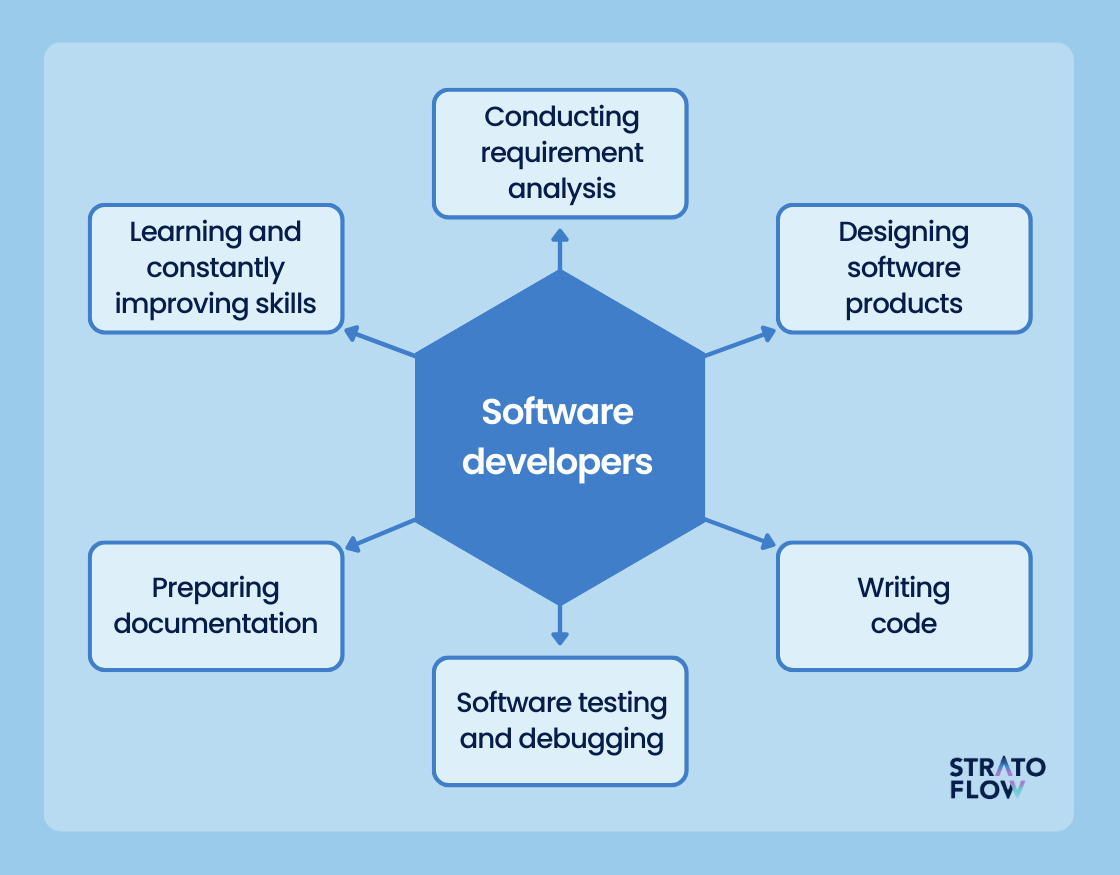Structure Success with a Dedicated Development Team for Your Business Demands
Structure Success with a Dedicated Development Team for Your Business Demands
Blog Article
Devoted Developers vs. In-House Teams: Which Is Right for You?
The decision between using committed programmers and keeping an in-house group is a considerable one that can impact the trajectory of your projects and overall business strategy. Devoted programmers offer a degree of flexibility and customized competence that can be advantageous for particular, temporary efforts. On the other hand, internal groups add to a cohesive business society and a nuanced understanding of lasting goals. By checking out crucial aspects such as spending plan, project scope, and preferred control, you can better determine which method aligns with your organizational requirements. The effects of this selection extend beyond prompt results-- consider the wider influence on your organization landscape.
Recognizing Devoted Programmers
The expanding need for specialized abilities in the technology sector has actually brought about the appearance of devoted programmers as a viable remedy for numerous organizations. These experts are usually contracted on a job basis, permitting firms to leverage particular competence without the lasting commitment connected with full-time hires. Devoted programmers are usually ingrained within a customer's team, offering versatility and scalability to fulfill project requirements.
This version permits organizations to access a worldwide ability pool, which is especially advantageous in a quickly advancing technical landscape. Committed designers can be sourced from numerous geographical locations, making certain that business can find the right ability at competitive rates. They commonly bring a wealth of experience and understanding, having actually dealt with diverse tasks throughout different markets.
Additionally, dedicated programmers can concentrate specifically on the jobs handy, improving productivity and effectiveness. They are geared up to incorporate seamlessly right into existing process, working together very closely with internal teams to achieve job purposes. This method not just minimizes the burden of employment and training yet additionally permits companies to remain agile, adjusting swiftly to changing market demands and technological developments.
Advantages of In-House Teams

Furthermore, in-house groups have a tendency to have a deeper understanding of the firm's goal, values, and goals. This positioning can boost employee involvement and inspiration, as employee feel extra attached to their job and the company's success. Additionally, having a devoted internal group allows for much better placement of goals and methods, as these members are consistently concentrated on the business's top priorities.
Internal teams additionally assist in quicker decision-making processes, as they can respond more swiftly to adjustments and difficulties. The well-known connections and experience with firm methods permit structured workflows and minimized miscommunication. Ultimately, the mix of a cohesive culture, positioning with organizational objectives, and effective interaction makes in-house teams a valuable asset for lots of organizations, specifically those wanting to grow long-lasting development and technology.
Price Considerations
When evaluating expense considerations, both in-house teams and committed developers present unique economic implications for organizations. Engaging devoted designers generally involves a pay-per-project or per hour rate model, which can be cost-effective for services with varying project demands. This method enables for flexibility in scaling resources up or down, ensuring that companies only spend for the services they need.
On the other hand, internal teams involve repaired expenses, including wages, benefits, and overhead expenses such as workplace and equipment. While this model uses higher control and prompt schedule of resources, it may result in greater long-lasting expenditures, specifically if the work does not warrant a permanent team.
Moreover, companies must consider the covert expenses related to employment and training of internal employees, which can further strain spending plans. In many cases, the time and sources invested in handling an in-house team can interfere with the company's core service purposes.

Project Monitoring and Versatility
Job administration and flexibility are essential variables that affect the choice in between committed programmers and in-house teams. Dedicated groups frequently have established procedures for taking care of projects properly, leveraging particular techniques like Agile or Scrum, which help with repetitive progression and flexibility.

Ultimately, the option in between internal teams and specialized developers rests on the wanted level of adaptability and the particular project administration demands. Firms need to review their description functional dynamics, job intricacy, and resource accessibility to figure out which option straightens best with their strategic objectives.
Making the Right Choice
Selecting the best advancement approach-- dedicated developers or internal groups-- calls for a mindful analysis of numerous variables that align with a firm's strategic goals. Conversely, internal groups can provide much better connection and assimilation with existing personnel.
Next, assess your spending plan. Committed developers often offer a cost-effective remedy for temporary tasks, while internal teams may incur greater long-term expenditures due to salaries, benefits, and expenses prices. Evaluate the degree of control and partnership wanted; internal groups generally cultivate stronger interaction and positioning with business culture.
In addition, think about the time framework. If immediate results are essential, specialized developers can be onboarded quickly, whereas building an in-house group requires time for recruitment and training. Evaluate the long-term vision of your company. Investing in an internal team might generate far better returns over time if continuous development is crucial. Inevitably, the choice rests on a comprehensive analysis of these elements, go to this web-site guaranteeing alignment with your business's total goals and functional requirements.
Final Thought
In final thought, the choice between internal teams and specialized developers hinges on project needs and business purposes. Alternatively, internal teams cultivate a natural culture and much deeper alignment with lasting objectives.
The decision between using devoted designers and maintaining an internal group is a substantial one that can influence the trajectory published here of your jobs and overall company approach.Task administration and flexibility are vital factors that influence the option between specialized programmers and internal groups. software engineering staffing.In contrast, internal teams may stand out in preserving a constant task monitoring structure due to their knowledge with the organization's culture and lasting goals. Devoted developers often offer an affordable remedy for short-term projects, while internal groups may incur greater long-term costs due to wages, advantages, and overhead prices.In verdict, the choice between specialized developers and in-house groups pivots on task demands and business objectives
Report this page